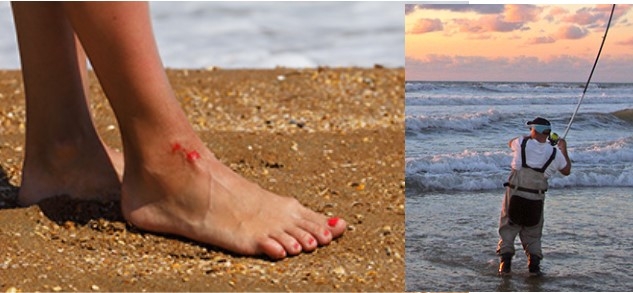UF Health experts available to discuss flesh-eating bacteria following Hurricane Idalia
University of Florida (UF) Health News
Gainesville, Florida - As Florida recovers from the impact of Hurricane Idalia, another threat to residents has appeared in its wake. Vibrio vulnificus is a potentially deadly, flesh-eating bacteria that lives in warm ocean water. Storms can push the bacteria into flooded areas and brackish waters.
At least five people have died from V. vulnificus in Florida this year; read an article here: www.usatoday.com/story/news/nation/2023/08/19/flesh-eating-bacteria-vibrio-vulnificus-bacteria-kills-5-florida/70631024007/. The bacteria also has been responsible for deaths in Connecticut, New York and North Carolina.
The University of Florida and UF Health have several experts who study this rare but deadly bacteria and are available for interviews:
Norman L. Beatty, M.D., assistant professor of medicine, Division of Infectious Diseases and Global Medicine, UF College of Medicine; his area of focus is tropical medicine and neglected tropical diseases; email Dr. Beatty at Norman.Beatty@medicine.ufl.edu.
Katherine Y. Deliz Quiñones, Ph.D., research assistant professor, Herbert Wertheim College of Engineering; her area of focus is water systems, systems ecology and ecological engineering; email Dr. Deliz Quiñones at katherine.deliz@essie.ufl.edu.
Paul A. Gulig, Ph.D., associate chair of education, Department of Molecular Genetics and Microbiology, UF College of Medicine; his area of focus is molecular pathogenesis, defined as the use of genetic manipulation of microorganisms to understand how they cause disease; email Dr. Gulig at gulig@ufl.edu.
Antar Jutla, Ph.D., associate professor of environmental engineering, Herbert Wertheim College of Engineering; his area of focus is impact of climate and weather on occurrence of vibrios, prediction of risk of vibrios in human populations; email Dr. Jutla at ajutla@ufl.edu.
Learn more at the Centers for Disease Control and Prevention website here: www.cdc.gov/vibrio/wounds.html.
Top
Gainesville, Florida - As Florida recovers from the impact of Hurricane Idalia, another threat to residents has appeared in its wake. Vibrio vulnificus is a potentially deadly, flesh-eating bacteria that lives in warm ocean water. Storms can push the bacteria into flooded areas and brackish waters.
At least five people have died from V. vulnificus in Florida this year; read an article here: www.usatoday.com/story/news/nation/2023/08/19/flesh-eating-bacteria-vibrio-vulnificus-bacteria-kills-5-florida/70631024007/. The bacteria also has been responsible for deaths in Connecticut, New York and North Carolina.
The University of Florida and UF Health have several experts who study this rare but deadly bacteria and are available for interviews:
Norman L. Beatty, M.D., assistant professor of medicine, Division of Infectious Diseases and Global Medicine, UF College of Medicine; his area of focus is tropical medicine and neglected tropical diseases; email Dr. Beatty at Norman.Beatty@medicine.ufl.edu.
Katherine Y. Deliz Quiñones, Ph.D., research assistant professor, Herbert Wertheim College of Engineering; her area of focus is water systems, systems ecology and ecological engineering; email Dr. Deliz Quiñones at katherine.deliz@essie.ufl.edu.
Paul A. Gulig, Ph.D., associate chair of education, Department of Molecular Genetics and Microbiology, UF College of Medicine; his area of focus is molecular pathogenesis, defined as the use of genetic manipulation of microorganisms to understand how they cause disease; email Dr. Gulig at gulig@ufl.edu.
Antar Jutla, Ph.D., associate professor of environmental engineering, Herbert Wertheim College of Engineering; his area of focus is impact of climate and weather on occurrence of vibrios, prediction of risk of vibrios in human populations; email Dr. Jutla at ajutla@ufl.edu.
Learn more at the Centers for Disease Control and Prevention website here: www.cdc.gov/vibrio/wounds.html.
